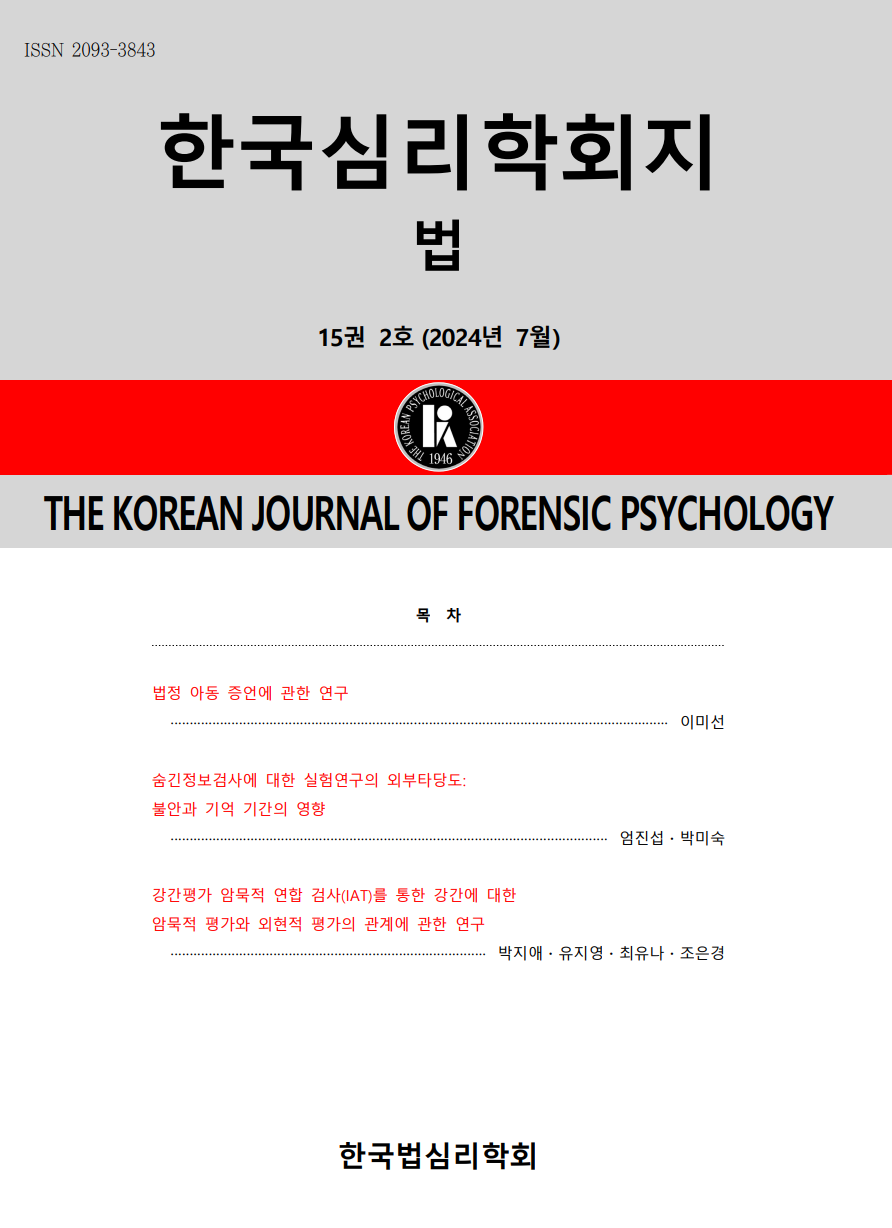open access
메뉴
open access
메뉴 ISSN : 2093-3843
ISSN : 2093-3843
The purpose of this study is to develop a PTSD Assessment Scale for victims of Domestic Violence and examine its construct validity. Post Traumatic Stress Disorder(PTSD) is the most common mental disorder among victims of domestic violence. This is why accurate assessment is important from the viewpoint of victim treatment. Twenty six items were generated through the previously published literature, especially DSM-IV. With this final scale, an investigation has been executed to victims of domestic violence and married women. From the exploratory factor analysis, two factors have been derived: re-experiencing/ avoidance, emotional numbing/hyper arousal. Significant correlations were shown between the PTSD Assessment Scale and PDS (Posttraumatic Diagnostic Scale), the PTSD Assessment Scale and IES-R (Impact of Event Scale-Revised), PDS and IES-R. Two groups (victims of domestic violence group and married women group) showed significant differences within each scale, the PTSD Assessment Scale, PDS and IES-R. The research limitations and further studies were discussed.